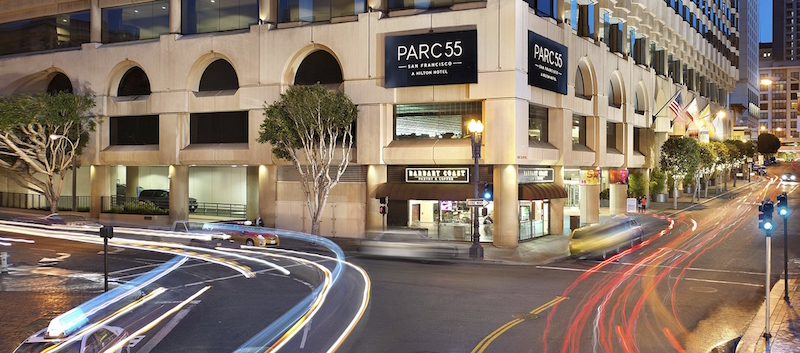
Steady Growth in the Hotel Business
Steady Growth in the Hotel Business
Bay Area stands among top-performing hotel markets.
A healthy economy, strong tourism and convention business and limited new supply are helping to keep the San Francisco Bay Area among the top hotel markets in the country.
“The hotel market is riding a wave of improving numbers [over] the last six years, and it’s hard to find many markets that compare” to the Bay Area, said Alan Reay, president of Irvine, Calif.-based hotel brokerage Atlas Hospitality Group.
Consistently high occupancy and average daily room rates fuel “tremendous” interest among potential buyers, but “not a lot of sellers,” he said.
Private equity firms, offshore investors and real estate investment trusts are active buyers in the market, said Andrea Grigg, an executive vice president for the hotels and hospitality group at Jones Lang LaSalle in San Francisco.
In 2015, Northern California’s year-over-year hotel sales volume jumped 116 percent to more than $4 billion, according to an Atlas Hospitality year-end report. In San Francisco County, the median price per room rose 249 percent to $435,833, while San Mateo County experienced a 91 percent increase in median per-room price to $366,983, the report states.
Among the highest priced Bay Area hotel transactions last year was Hilton Worldwide’s $530 million acquisition of the 1,024-room Parc 55 in San Francisco’s Union Square, sold by Blackstone Group. Also, Loews Hotels and Resorts’ approximately $894,000 per-room purchase of the 158-key Loews Regency (formerly Mandarin Oriental San Francisco) in the city’s financial district marked the area’s highest per-room price of 2015, Atlas Hospitality reported. San Mateo County’s largest and most expensive hotel sale last year was CBRE Global Investors’ $154.5 million purchase of the 421-room Sofitel San Francisco Bay in Redwood City. The seller was a joint venture of Prudential Real Estate and Lodging Capital Partners.
Bay Area hotel room supply lags behind demand, mainly due to high construction costs, but scant available land combined with the time-consuming permitting process also deters some developers, Reay said.
“In San Francisco, the new supply continues to be way below the organic growth of demand,” Grigg said. That, combined with the area’s “economic prosperity” and strong tourism market creates “the perfect storm for outstanding hotel performance,” she said. Other strong hotel markets, such as Los Angeles and New York, have seen more supply added, she noted.
There are 39 hotels in the development pipeline for the greater San Francisco area, including six hotels under construction comprising 951 rooms—469 in San Francisco and 482 in the region, including Marin County, the Peninsula and near San Francisco Airport, according to data from Hendersonville, Tenn., lodging researcher STR.
Hotels under construction include the 177-room Courtyard by Marriott in Redwood City; 200-room Yotel San Francisco at 1095 Market St.; and 135-room Proper Hotel San Francisco at 45 McAllister St.
New hotel development, particularly in Silicon Valley, has contributed to a slight softening in area hotels’ revenue per available room (RevPAR) growth, a key performance metric for the sector, said Catherine Bolstad, a director of valuation and advisory services at CBRE Hotels in San Francisco.
“Demand is still strong,” Bolstad said, but the average daily room rate growth is “not as robust as it has been in the past.”
The San Francisco metropolitan statistical area, which includes San Mateo and Marin countries, saw double-digit RevPAR growth from 2011 through 2014, but it rose just below 8 percent in 2015, Bolstad said. In 2016 and 2017, it is projected that RevPAR growth will slow to approximately 7 percent and then 3 percent over prior year levels, respectively, she said. The average daily rate for the San Francisco/San Mateo market in 2015 was just below $223 with an occupancy of 84 percent, according to STR.
An influx of rooms available through home-sharing service Airbnb also has affected the market, industry experts said.
“It’s like any other competitor—it’s inventory,” said Rick Swig, a hotel consultant with San Francisco firm RSBA and Associates. “There’s not so much impact for citywide conventions or corporate travel, but, certainly, for leisure travel there’s been a impact.”
While San Francisco’s average hotel occupancy rate has been steady in recent years, a slip is expected to occur due to the renovation of the city’s Moscone Center, which will remove some convention hotel bookings. Most of that impact will take place in 2017 and 2018, Swig said.
Tourism contributes to the Bay Area hotel market’s stability. More than 24.6 million people visited San Francisco in 2015, up 2.7 percent from 2014, and about 10 million of those visitors stayed overnight, according to the San Francisco Travel Association.
Overall, industry experts expect the Bay Area hotel market to remain strong over the next few years.
“Demand in this region has been steadily growing and strong since the beginning of 2010,” Swig said. “Other than the Moscone hiccup, I don’t see anything radical happening” to change the market’s performance.
“The future does not look grim—it looks steady,” Swig said.

